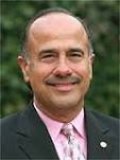
“Chiropractic was founded to provide the public with a valuable, distinct service of enhancing life, health and human potential without duplicating any existing services,” said Sherman College President Edwin Cordero, D.C.
The release of the Sherman press release follows closely on the heels of two other letters released by chiropractic college presidents in support of Wisconsin's efforts to expand the scope further into primary care and drugs.
Stiefel asserts the “necessity for the chiropractic profession to shed old, unsupported ideologies and embrace current evidence and current research as the foundation for professional progress.”
Brimhall asserted in his letter to the WCA that those institutions choosing to “restrict” their educational offerings by not including drugs do so based on “dogmatic precepts and/or philosophical tenets” and that such actions “interfere with the needs of patients”.
Cordero, who is the first president to speak out publicly against the efforts in Wisconsin stated in his letter:
"The practice of medicine is an allopathic and therapeutic objective of diagnosing and treating symptomatology and disease. The objective of chiropractic is to locate, analyze and correct vertebral subluxations (misalignments of the spine that are a detriment to one’s well-being)."
Cordero referred to "a landmark chiropractic case in Wisconsin supports this assertion of chiropractic as separate and distinct:
In 1907, an indictment against Shegataro Morikubo charged that he had illegally practiced medicine, surgery and osteopathy without a license. The landmark Morikubo case set the first precedent for chiropractic practice in Wisconsin and the entire country because the judge ruled that chiropractic was a separate and distinct profession. It was argued that chiropractic has its own philosophy, science and art."
But many in the profession believe that drugs are a red herring and the the real issue is the push by the Chiropractic Cartel into Primary Care. In fact, every chiropractic college in the United states asserts that it trains its graduate to be primary care providers since this is a requirement for accreditation by the Council on Chiropractic Education.
Despite this, Cordero asserted in his letter that Sherman trains its graduates as Portal of Entry Providers stating:
"Sherman College of Chiropractic holds the position that the practice of chiropractic remains a service separate and distinct from other healing arts. Its unique clinical objective is to locate, analyze and correct vertebral subluxations. Building on this, Sherman College teaches courses to prepare its graduates to practice as portal-of-entry providers in all 50 states and around the world. Sherman College graduates are competent and trained to meet all requirements for licensure and safe application of the unique service of chiropractors."
While chiropractic programs such as National University and Western States that are pushing for expansion into the practice of medicine have seen a steady decline in enrollment according to IPEDS data from 2010 through 2013, schools like Sherman that embrace a vitalistic, subluxation centered model have seen their enrollments increase during the same time.
The efforts to expand chiropractic scope of practice and include drugs and other procedures that are the practice of medicine are believed to be a response by schools such as National and Western to increase their declining enrollments and to increase practitioners' ability to generate additional income. Nevertheless, they frame it as expanding primary care access to those in need.
